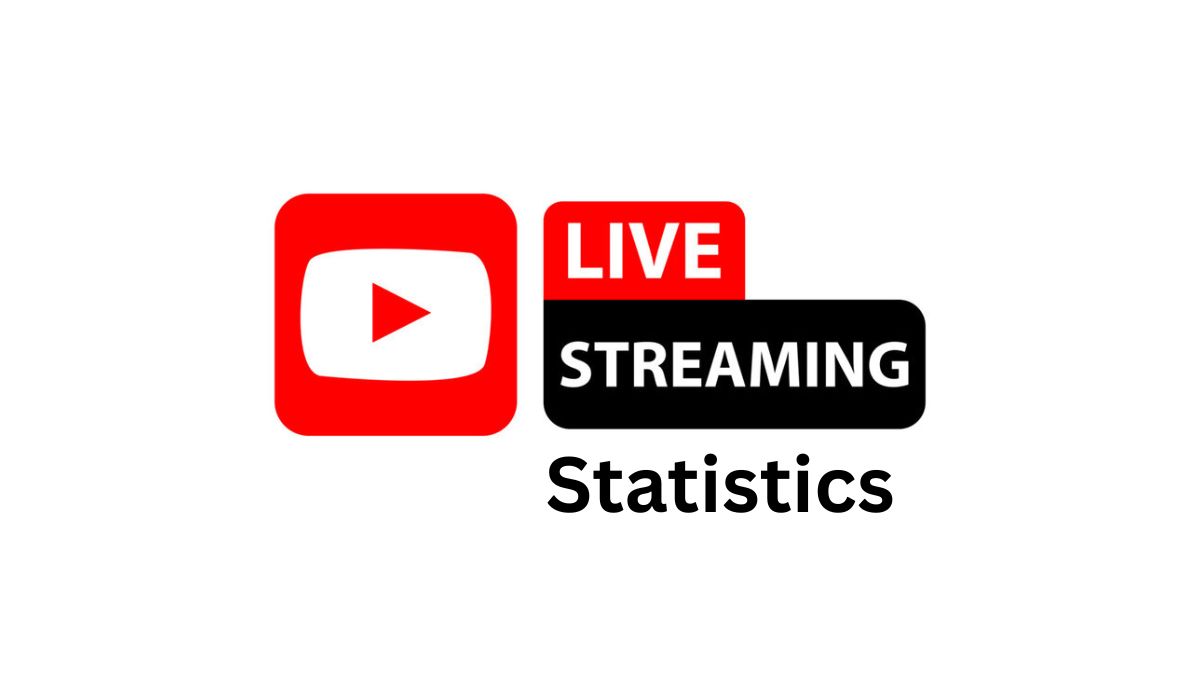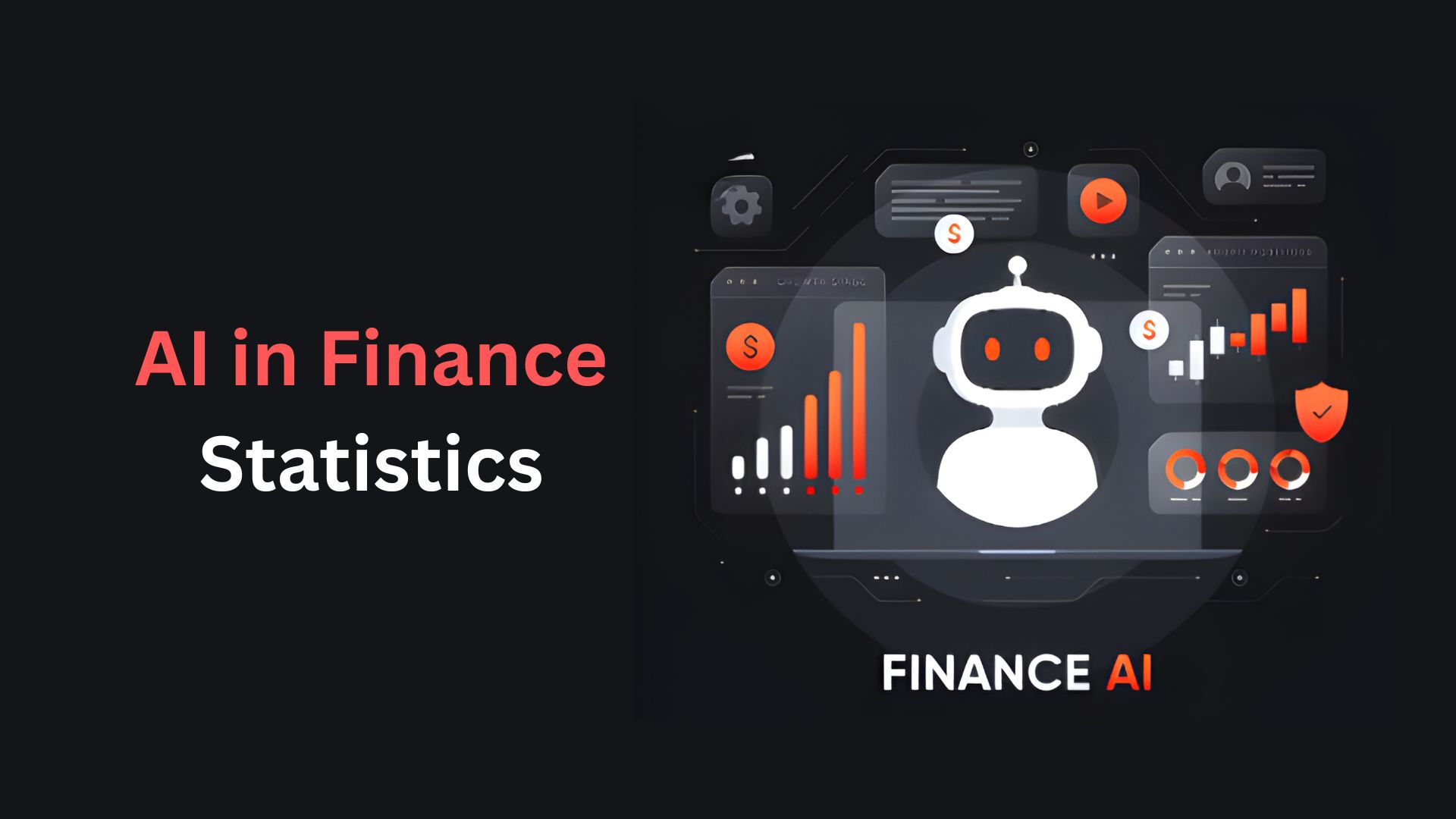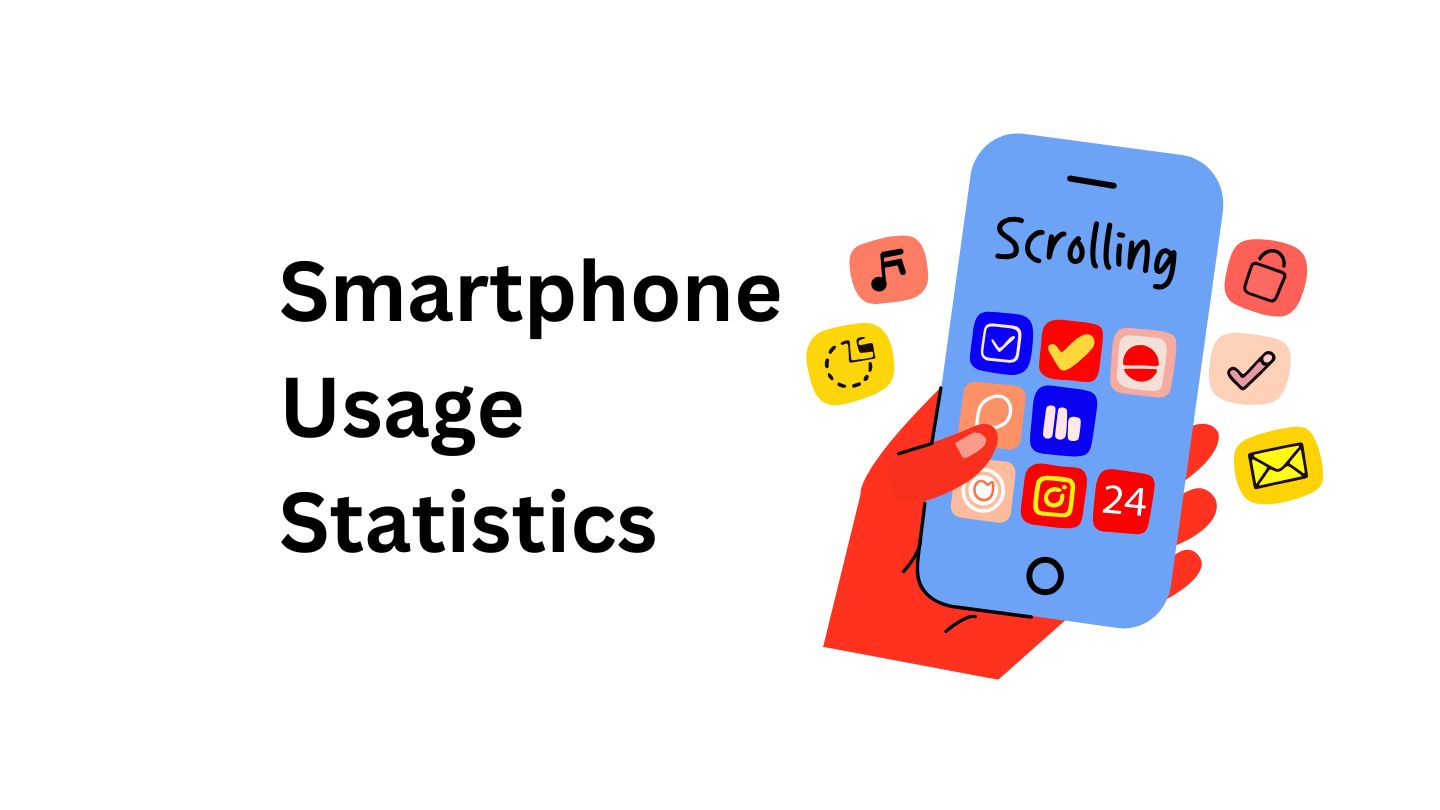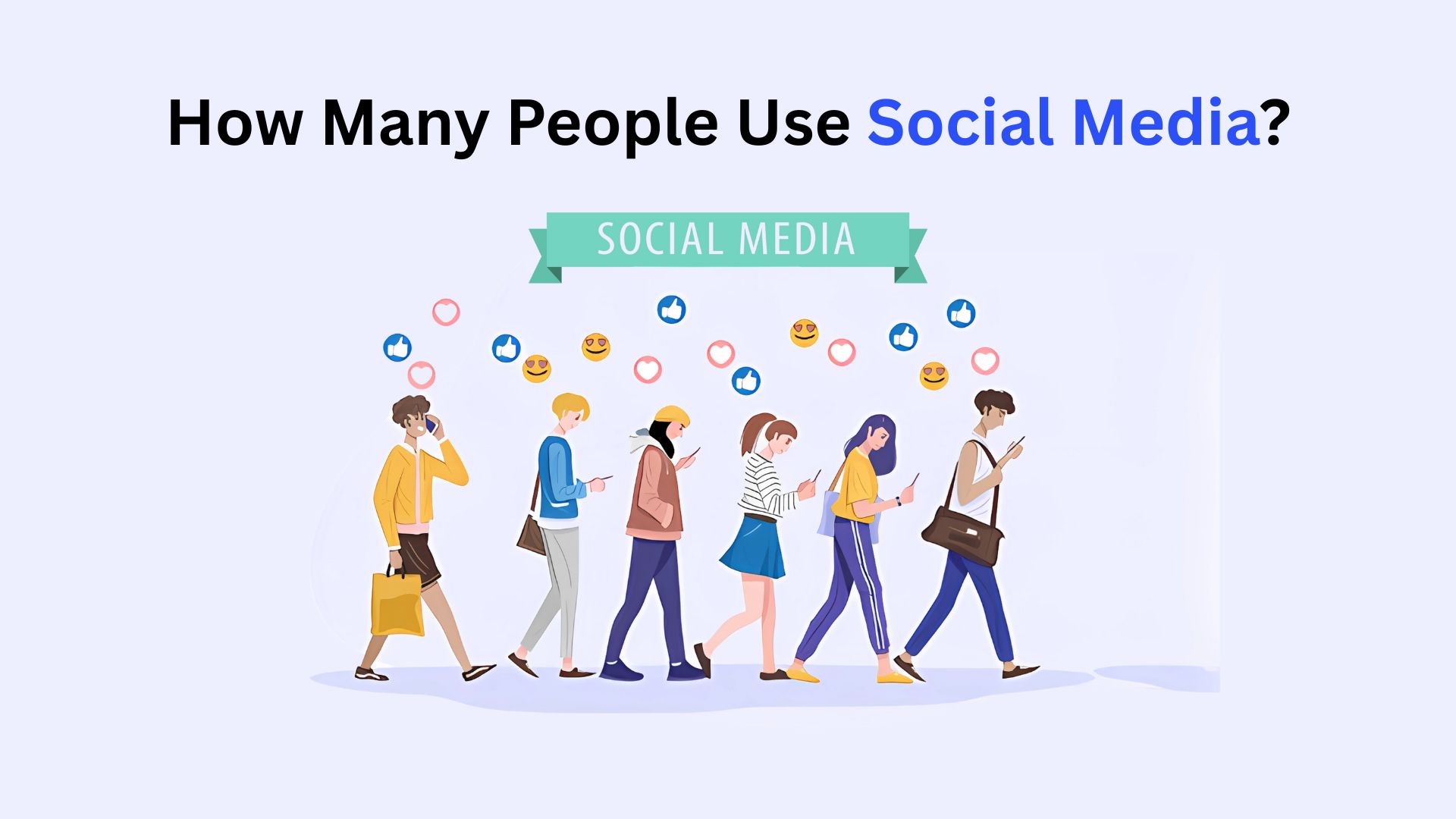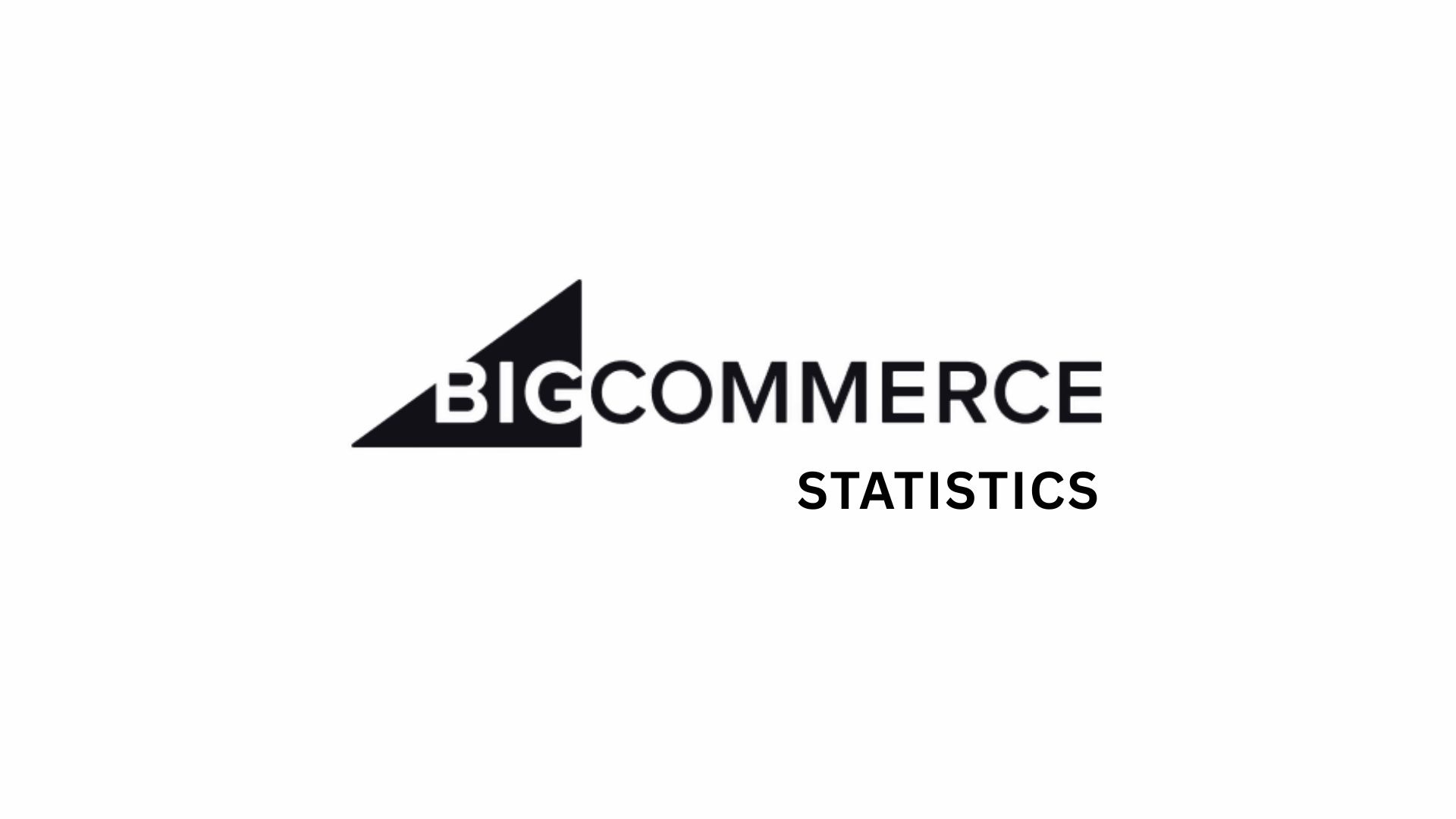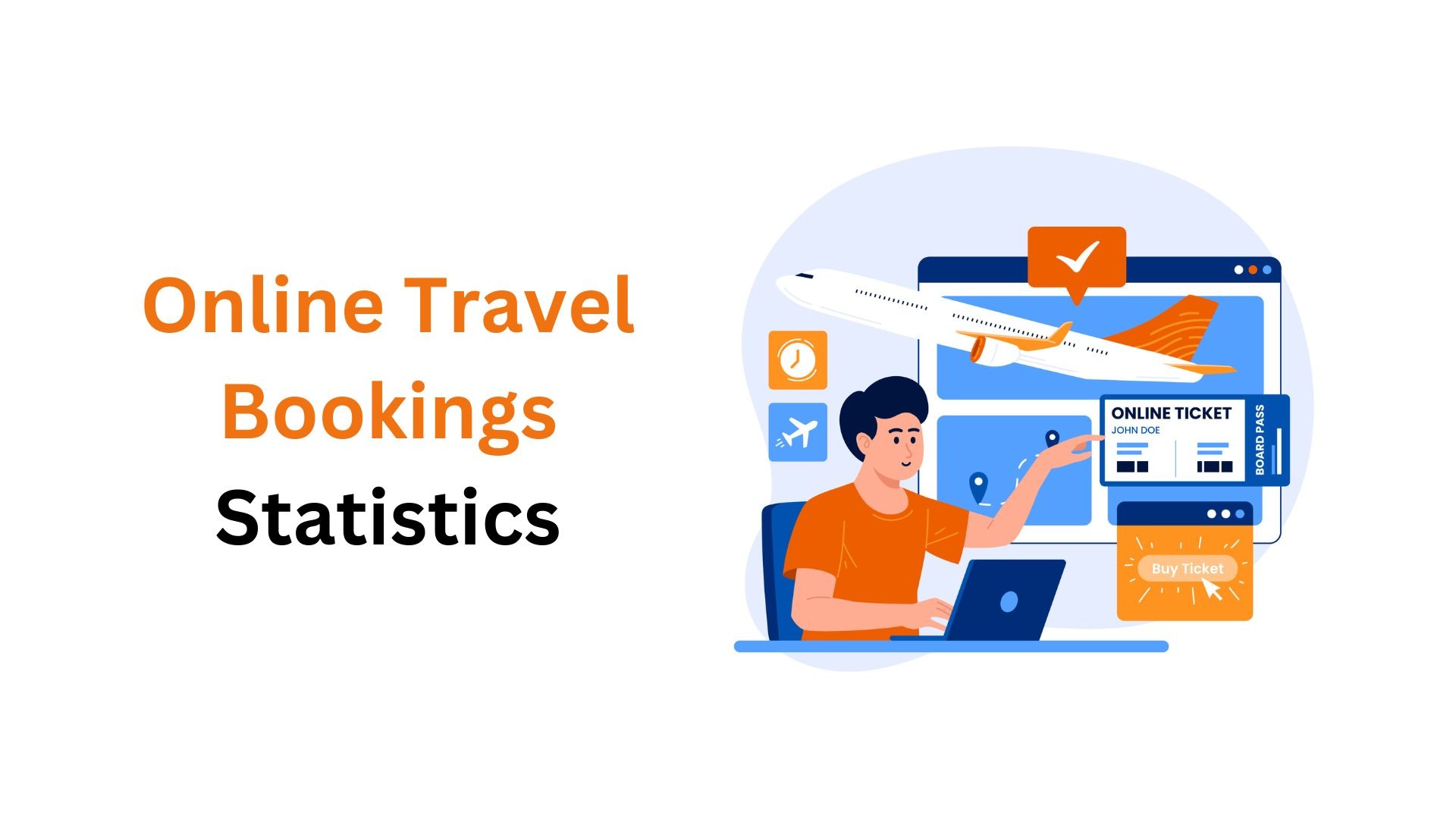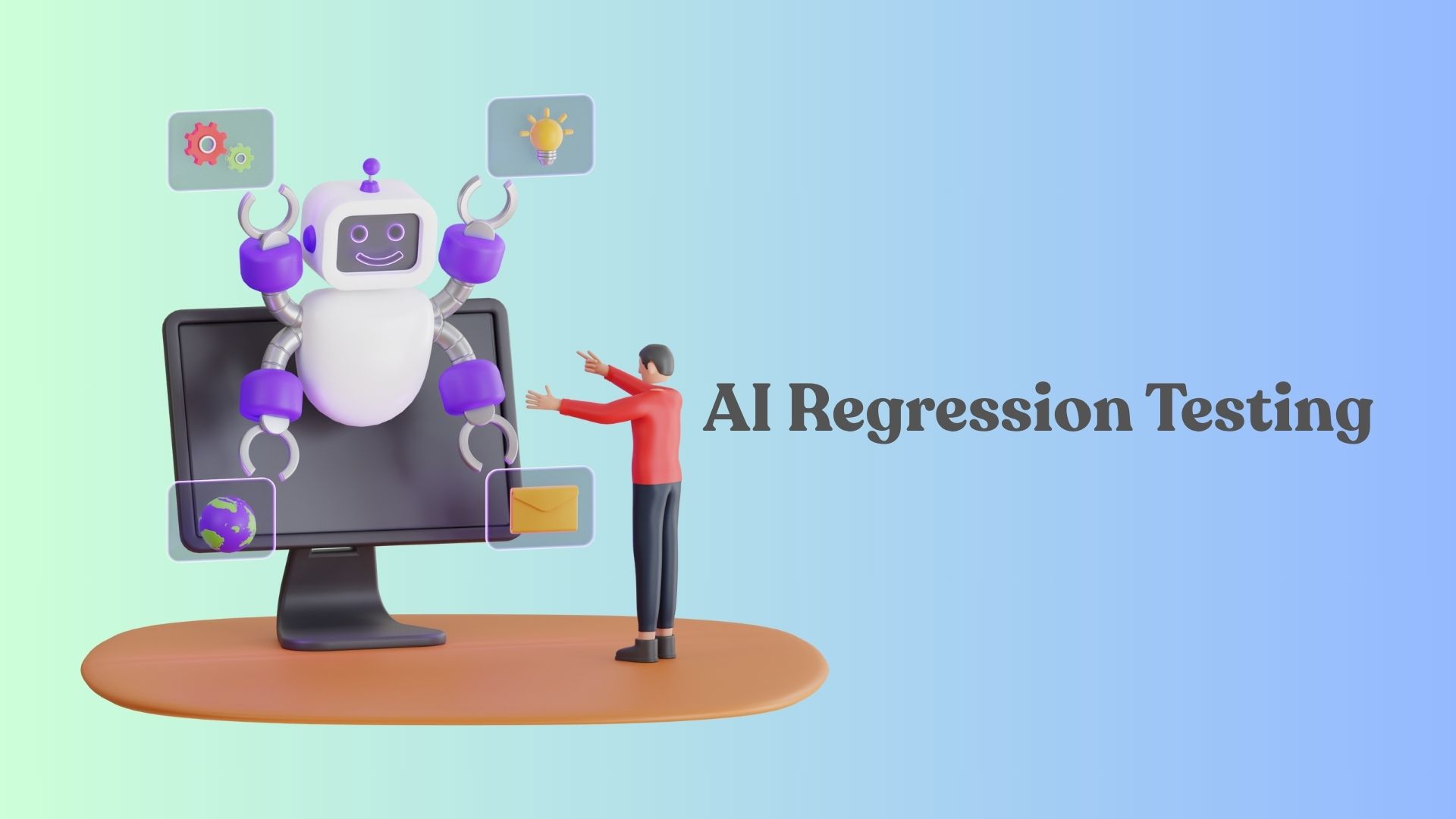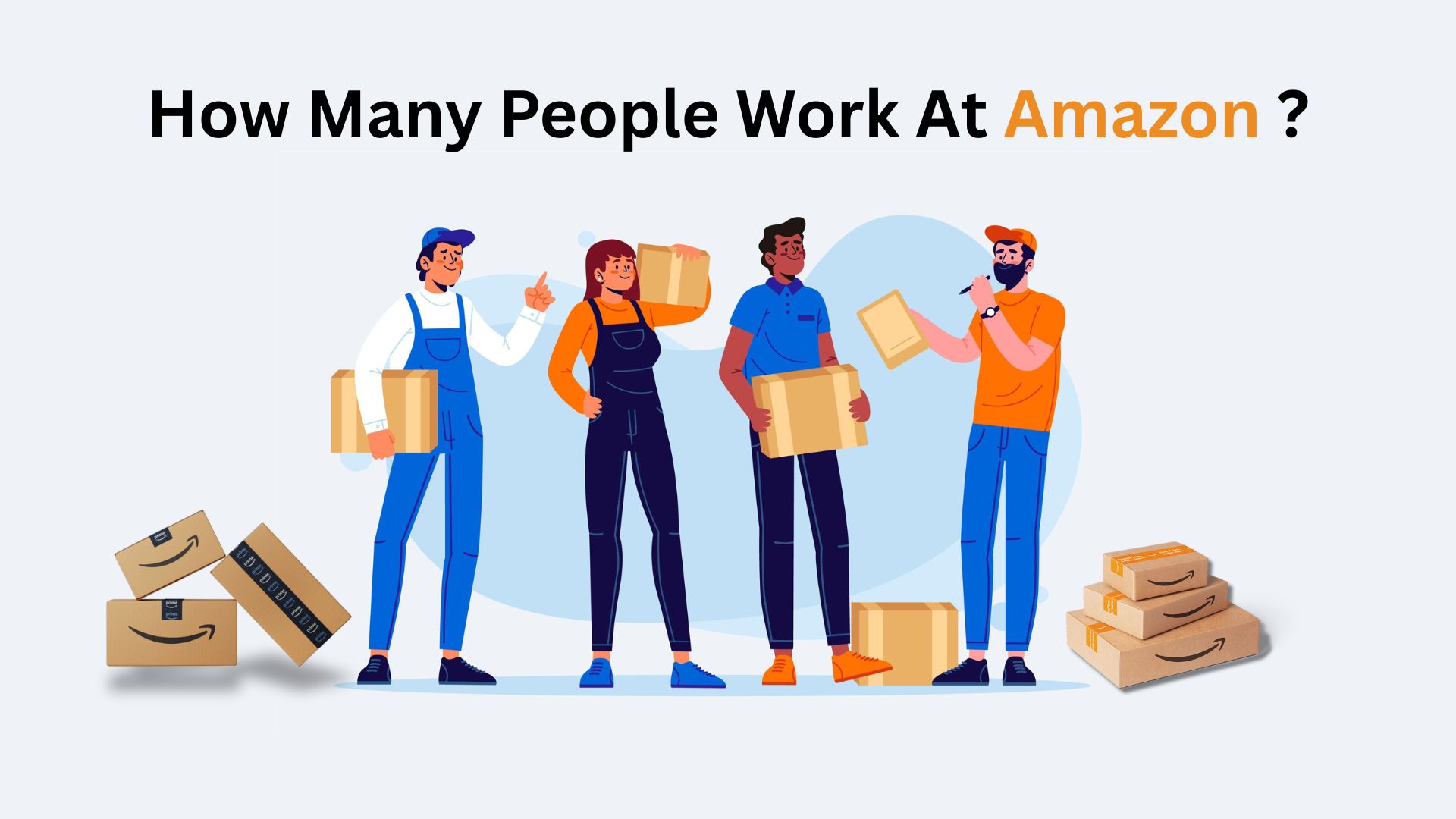Business Automation Statistics By Market, Trends And Facts (2025)
Updated · Sep 24, 2025
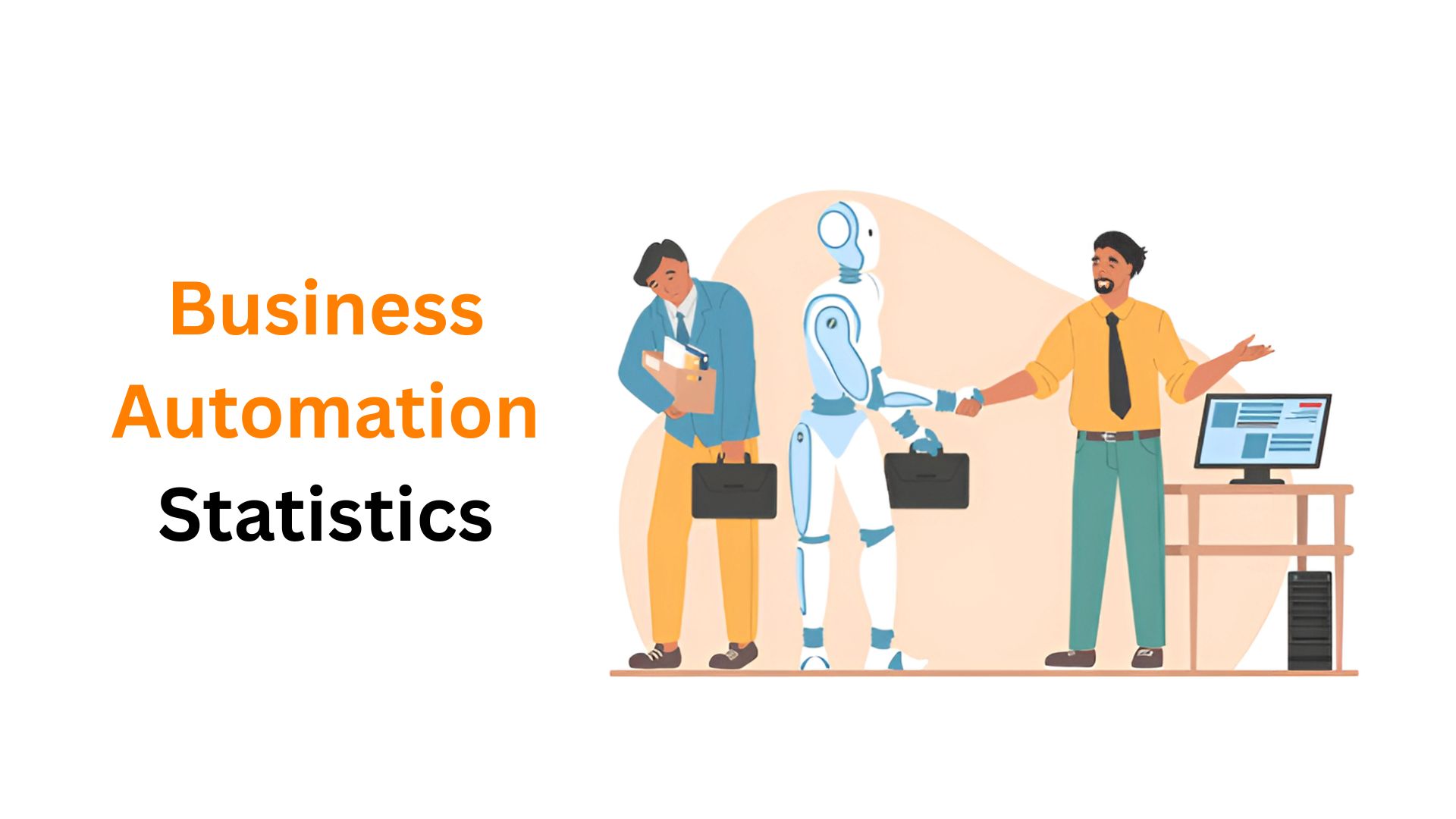
Table of Contents
- Introduction
- Editor’s Choice
- Business Process Automation Market
- Business Process Automation Adoption Rates
- Workforce, HR, And Skill Automation Statistics
- Business Automation Adoption Trends
- Sales In Business Automation
- Business Automation In Marketing
- AI And Machine Learning In Automation
- Future Outlook
- Top Challenges
- Conclusion
Introduction
Business Automation Statistics: Business automation has transitioned from a futuristic vision to a vital survival tool in today’s fast-paced digital economy. In 2024, approximately 60% of companies had implemented automation in at least one business process, with projections reaching 85% by 2029 for broader adoption. Roughly 34% of all business tasks now incorporate automation to enhance workflows.
Within marketing, over 51% of companies already utilize marketing automation, and 56% on average are engaged in related platforms; B2B usage is growing as well, with 40% planning to adopt the technology. Marketing automation delivers measurable results—sales productivity improves by about 12.2% and overhead costs drop by similar margins.
Robotic Process Automation (RPA) continues delivering strong impact: 86% of businesses report productivity gains, 59% reductions in cost, and 92% improved compliance. Meanwhile, industrial automation’s global market is projected at USD 226.8 billion in 2025, with a compound annual growth rate of 10.8% through 2030.
The article gets into salient business automation statistics for 2025, with information on adoption trends, cost-saving, growing areas, and on-the-ground benefits all backed by a recent dataset.
Editor’s Choice
- In 2024, 66% of companies are executing automation in at least one process.
- Forecasts estimate that the global Business Process Automation (BPA) market will grow from US$13 billion in 2024 to US$23.9 billion in 2029, just as DPA alone will hit US$26.48 billion.
- 66% of companies saw increased revenue due to AI, while 45% were able to decrease costs using it.
- With 74% of AI-using companies planning to raise their investment, RPA has also fallen in adoption percentages to 31%.
- As far as marketing automation is concerned, it is already widely used: 51% of companies have it in their portfolios, and triggered campaigns drive 75% of revenues for B2B marketing automation.
- By next year, nearly 30% of sales activities will be automated, with automation tools increasing salesperson productivity by 14.5%, lowering marketing costs by 12.2%, and increasing conversions by as much as 200%.
- By the year 2030, the automation market is forecast to be worth US$600 billion worldwide, while generative AI could either transform or complement at least 40% of work activities occurring within the US by the end of the decade.
- About 74% of surveyed organisations believe intelligent automation will impact up to half of their workforce, and 69% of the day-to-day managerial tasks could be automated by the end of 2024.
Business Process Automation Market

(Source: softwareoasis.com)
- As per Softwareoasi, business automation statistics state that the Global BPA (Business Process Automation) markets are highly optimistic for expansion in the coming years: it is forecasted to increase from US$13 billion in 2024 to US$23.9 billion in 2029.
- It indicates steady plus growth at a CAGR of 11.6% as per Mordor Intelligence data published in June 2024.
- Remaining within, Digital Process Automation (DPA)—which is said to be a sub-area of BPA—is now rapidly growing.
- The DPA market, which was valued at around 7.8 billion in 2019, is anticipated to reach 16 billion by 2025 at a CAGR of 13%. Separate projections estimate the market to grow from US$14.37 billion in 2024 to US$26.48 billion by 2029.
- These trends reflect the widespread adoption of automation technology by industries in order to streamline their operations while improving efficiency and reducing manual work.
Business Process Automation Adoption Rates
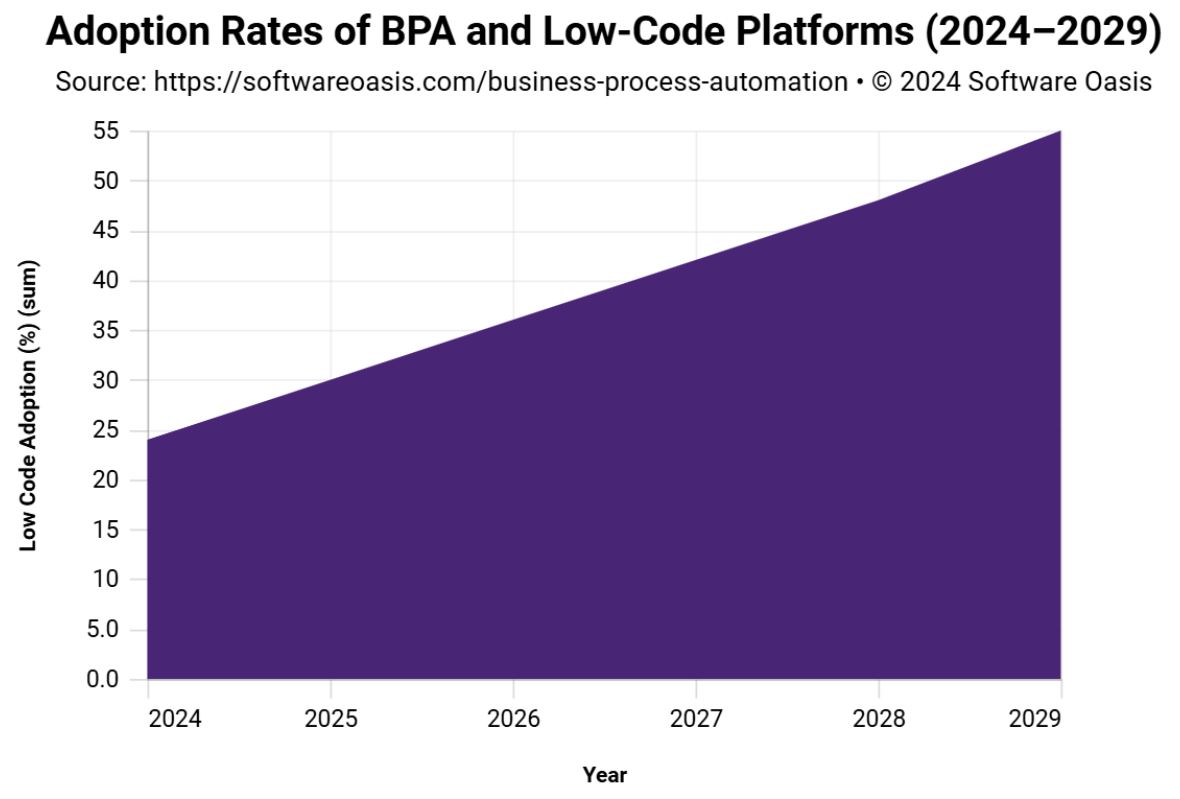
(Source: softwareoasis.com)
- Also evident from the McKinsey & Company February 2024 report is that in 2024, 66% of companies have automated at least one business process, showing the strong trend toward the spread of automation in industries.
- One of the major factors behind this gain has been the lasting effect of the COVID-19 pandemic, which encouraged in excess of 80% of organisations to accelerate their BPA adoption to help remote working and increase operational effectiveness, as pointed out in a November 2024 report by Cflow Apps.
- Additionally, low-code platforms, which provide tools for building automated workflows with little coding, are now more renowned.
- As per the October 2024 Salesforce Survey, around 24% of companies have already initiated low-code platforms for workflow automation activities, and about 29% are expected to implement these platforms shortly.
Workforce, HR, And Skill Automation Statistics
- Companies around the globe are turning more to automation to relieve their employees from performing manual and repetitive tasks.
- Shifts of this nature are creating changes to how workplaces function and changes to how jobs come to be.
- According to a Statista survey on business automation statistics, workforce management solutions generated revenues of approximately US$2.4 billion in 2019, a US$600 million increase from the preceding year.
- The transformation of the workers through automation is indeed becoming another major facilitator.
- Accordingly, a global survey estimated that about 74% of participants believe that somewhere between 11 and 50% of their workforce will be affected by automation-intelligent technologies.
- Over 80% of business leaders believe that they are expediting the pace at which work processes are being automated and providing more options for remote work.
- Another 50% of the group is ready to expedite the digital transformation of roles within their organisations.
- As new technologies reshape the workplace, the jobs themselves concern the workers more and more.
- 49% of organisations indicate being busy developing in-house upskilling programs for their employees in preparation for this new environment.
- Technology implementation will cause 43% of the workforce to be reduced, while 34% will see team expansion.
- Gartner estimates that by 2024, 69% of everyday managerial tasks will be fully automated.
- According to McKinsey, which reports ON business automation statistics, shows that approximately one-third of all work activities could be automated in nearly 60% of existing jobs.
- The goal for some companies, approximately 51%, regarding their automation efforts is to make their workers more productive.
- 31% of these companies view the stripping away of jobs through automation as a grave concern.
- Attempting to resolve these issues, nearly half of the affected employees may be redeployed through their employer’s intervention.
- It is estimated that 75% of IT automation technologies are facing a threat due to skill deficit, and 40% of digital workplace tools are having similar issues, as per the Gartner report.
- Some 45% of HR departments have at least begun to consider intelligent or process automation as a way to address these challenges.
- According to 18% of IT leaders, return on investment for automation in HR is considered to be the highest.
- Almost 70% of businesses agree that automation plays a role in the ability to create better and more efficient teams.
- There are 61% of business leaders believe that automation tools will help hiring managers find the best candidates to fill a particular role.
Business Automation Adoption Trends
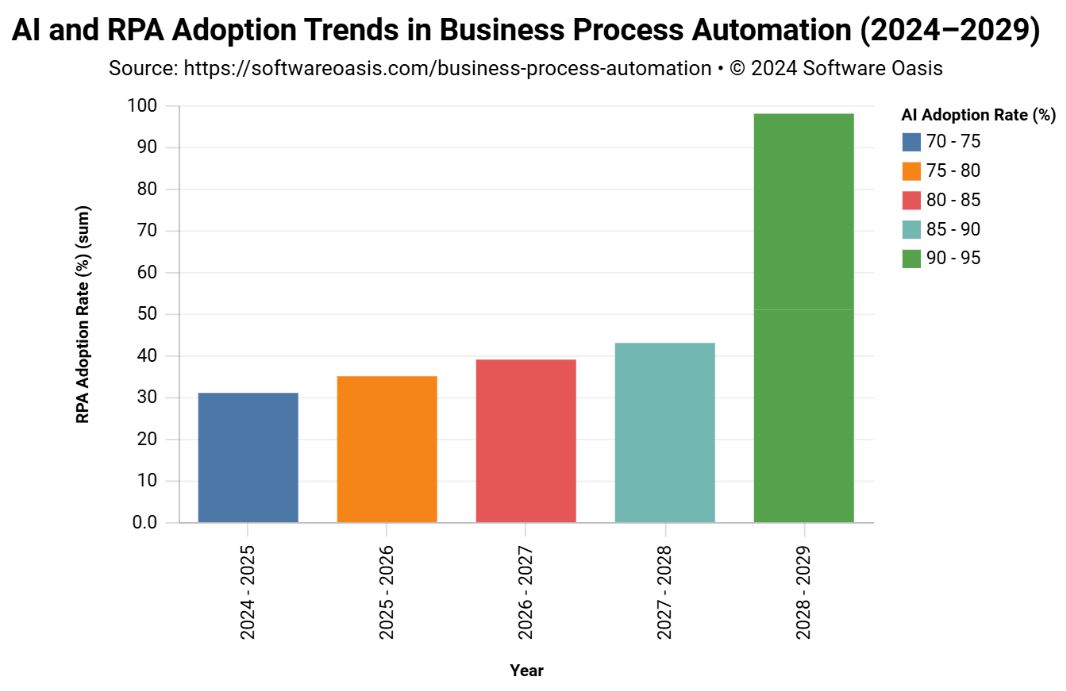
(Source: softwareoasis.com)
- Artificial intelligence and robotic process automation have been assisting each other for many years in advancing Business Process Automation (BPA).
- According to a report by Cflow Apps last November 2024, the AI-driven automation is being adopted at a significant pace, with 74% of the organisations using AI stating that they want to increase their investments in this area in the next three years.
- Also, it is RPA that has taken a giant leap in the automation field and has made itself the most used technology for BPA systems, with an adoption of 31%.
- Supporting this trend, a survey highlighted by Forbes Advisor and quoted in the FlowForma Blog (June 2024) found that more than half of the businesses are now leveraging AI tools in pursuit of operational efficiency.
- Such statistics signal the rising importance of intelligent automation in streamlining workflows and enhancing productivity.
Sales In Business Automation
- Automation in the field of sales is catching on, with 47% of sales teams planning to use automation to enhance work efficiency.
- This trend is backed up by data showing that sales automation improves productivity by 14.5% and reduces marketing costs by 12.2%.
- More than 50% of business professionals have their automation implementation plans nailed down, primarily for customer experience enhancement.
- Many tools are also leading nurturing, which is generating a 200% increase in conversions for some companies.
- Salesforce leads the charge here, being utilised in 23% of all automation efforts, followed closely by Slack. B2B marketers have reaped significant benefits from automation.
- According to a Sales Fusion study, 77% of owners surveyed noticed a rise in conversions after automation in their business processes.
- The automation tools by themselves could also increase sales and reduce overhead by 12.2%.
- With automation, sales productivity was evidenced to increase by as much as 14.5% and consequently, it cut down costs by 12.2%, as Nucleus Research found.
- Conversely, sales software uses users’ browser history to serve personalised ads, and with that, sales can go up by as much as 20%.
- Sales and customer experience tasks are predicted to be 30% handled by RPA systems by 2021.
- Customer servicing costs companies about US$1.3 trillion every year; with chatbots, this cost is reduced by 30%, again suggesting that automation is making sales not just more efficient but also cost-effective.
Business Automation In Marketing
- Almost 51% of companies are already using marketing automation software, and 58% of B2B companies are planning to adopt marketing automation technologies shortly.
- Making for a strong marketing effort, 67% of top-performing marketing companies are already using some form of automation.
- Marketing automation spending continues to increase by an average of 14% every year, with anticipated total expenditures hitting US$25 billion in 2023.
- While half of the companies at least partially use process automation software to conduct their marketing activities, only 9% say their marketing departments are fully digitised.
- Patently, 80% say automation improves the capability to generate leads, while 77% declare it increases conversions.
- Almost all digital marketers now agree that process automation is a must for business survival today. However, effective use of automation does not come without its challenges.
- According to Atomizy, creating high-quality automation (16%), integrating systems (14%), and generating content (10%) are ranked as the bigger hurdles.
- If we look at Omnisend, their finding were that automated omnichannel marketing drives a 90% customer retention rate and more than doubles purchasing frequency with a 250% increase.
- Furthermore, according to 80% of marketers who adopted automation, lead generation has improved, with many also reporting higher conversion rates.
- According to Venture Beat’s research of 43 different automation platforms, 50% of the platforms that increased the number of leads also increased conversions.
- Bigger firms have managed to save advertising expenditure by as much as US$130,000 per annum by means of automation.
- Advertising is largely digital, where one-third of ads were automated in 2016, whereas by 2019, over 72% were automated.
- However, when handling social media, these automation tools are quite useful. Using them could save more than six hours a week, allowing for tasks that are otherwise pending.
- Since time is money, automating social media could very well translate into cost savings. Marketing automation tools do better than manual methods.
- For instance, automating email campaigns using software tends to give higher conversion rates (58%) than manual email blasts do.
- Such automated emails are also effective in leading and improving overall revenue by approximately 10%.
- Furthermore, 75% of B2B revenue is now generated through triggered automated campaigns, which indicates how important these systems have become in marketing today.
AI And Machine Learning In Automation
- AI and machine learning are increasingly becoming integral in business process automation. These technologies are implemented not only to ensure the flow of work remains predictable and efficient but also to minimise human errors and hasten operations.
- AI spending stood at nearly US$342 billion in 2021 worldwide, according to IDC’s Worldwide Semi-annual AI Tracker.
- The report also forecasts an 18.8% growth in the market in 2024, a market that shall cross US$500 billion by the year’s end.
- According to a 2020 Deloitte survey, almost 73% of executives were of the view that their companies have implemented some intelligent automation initiatives employing AI and ML technologies.
- This same survey further added that approximately 50% of companies utilise AI for at least one business function.
- Among companies further down the ranks in AI application, only 43% report having a communicated AI strategy.
- In terms of usage, the businesses use AI for many purposes; 45% of the businesses use AI specifically for operational cost reduction.
- ML is similarly widely accepted, with 38% of companies using it for expense reduction, and 34% leveraging it for enhancing customer experience.
- Overall, around 66% of organisations have increased revenues due to the utilisation of AI.
- Only in the sphere of HR, 56% of the companies have reported increased revenues from the implementation of AI solutions.
- These stats indicate that automation is being transformed by AI and ML in terms of enhanced performance, lower expenditure, and the growth of businesses.
Future Outlook
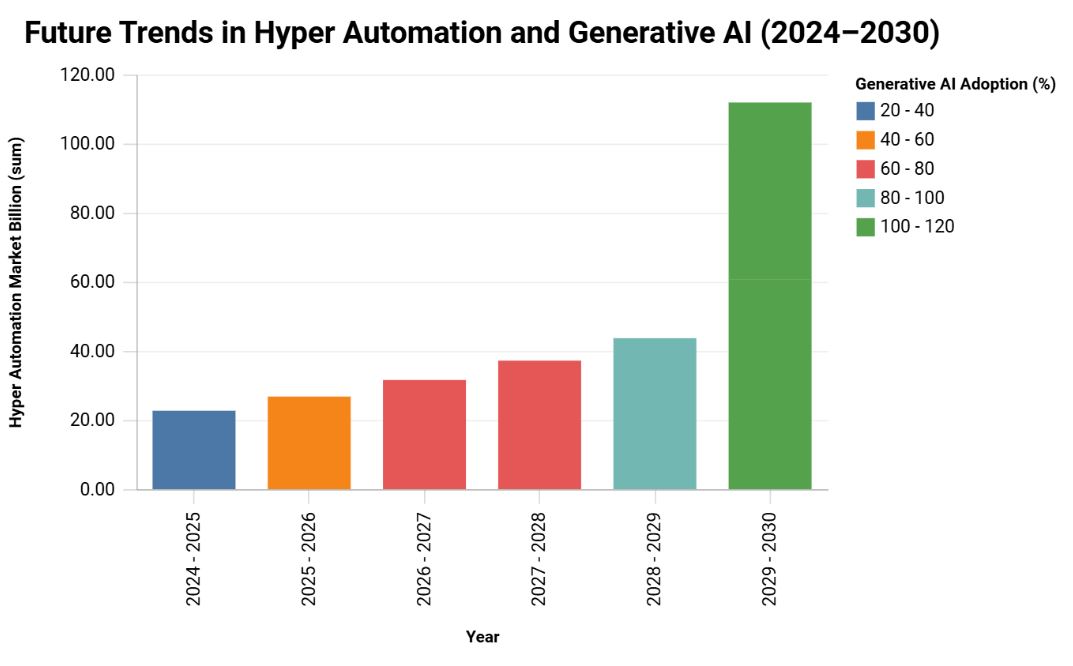
(Source: softwareoasis.com)
- The future of BPA is very bright as more companies are into digital transformation.
- Gartner’s report, as cited by Imaginovation Blog, also predicts that the global hyper-automation-enabling software market shall peak at about US$600 billion by 2030.
- On the other hand, generative AI will bring in a tectonic change in how businesses currently function.
- The Harvard Business Review further predicts that by the year 2030, over 40% of jobs done in the USA will be either enhanced or entirely reimagined by generative AI technologies.
Top Challenges
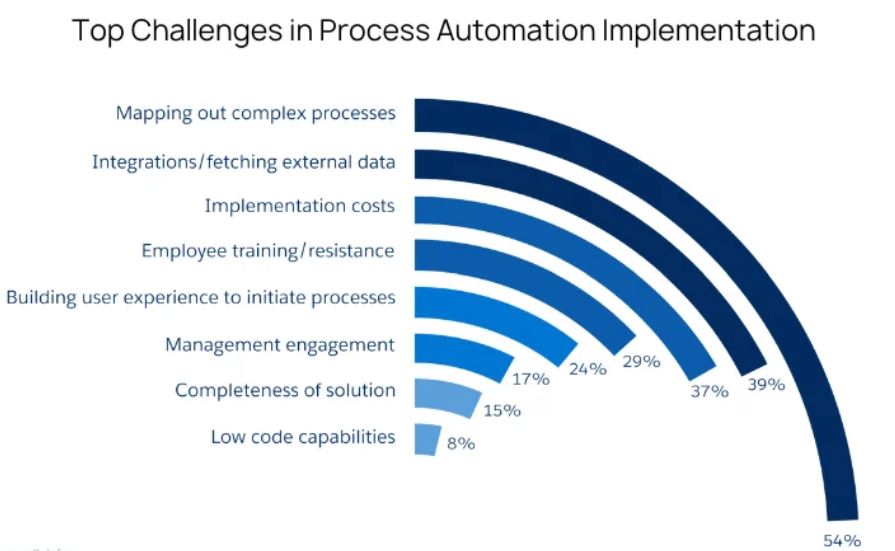
(Source: businessdasher.com)
- Difficulties in mapping complex processes plague 54% of the enterprises while automating process changes.
- Some 39% additionally face issues integrating their systems and retrieving external data, and 37% worry about the cost of implementation.
- Another 29% find employee training and resistance to change their hurdles, while 24% see user-friendly process initiation experiences as a challenge.
- Another 17% cite issues related to management engagement, and 15% express concern about the thoroughness of the automation solutions.
- Finally, 8% say they have problems linked to low-code capabilities.
Conclusion
Business Automation Statistics: In 2024, business automation is the prime mover for change across a variety of industries. Automation tools are becoming essential for modern businesses by enhancing customer service, cutting costs, and boosting productivity.
Integration and cost factors pose hindrances to automation adoption, but the long-term positives far outweigh the negatives. Businesses embracing automation will be able to operate optimally for now and be better placed moving forward.
FAQ.
As of 2024, 66% of businesses automated at least one process, spurred largely by the post-pandemic digital transformation. The adoption of business automation is now picking up at an unprecedented rate with low-code platforms and AI technologies.
Business Process Automation (BPA) is set to grow from US$13 billion in 2024 to US$23.9 billion by 2029, while the broader automation software market is expected to explode to US$600 billion globally by 2030. Digital Process Automation (DPA) and AI are major growth vectors for these.
It is said that AI is the strongest force to fuel automation, where 66% of companies declared that they increased their revenue from the utilisation of AI, and 45% also use it to cut costs. The AI helps in optimising tasks and reducing errors, providing proper judgment for areas comprising HR, sales, and customer service.
On the marketing front, 51% of companies opted for automation, with 80% of them stating that it improved their lead generation activities, while triggered campaigns provide up to 75% of B2B revenues. On the sales side, automation enhances productivity by 14.5%, decreases marketing costs by 12.2%, and increases conversions by 200%.
The automation of workplace processes is seen as another cause for change in the workplace, with 69% of the routine managerial tasks expected to be automated by 2024. While 43% of companies expect to undergo a reduction in workforce, 34% expect to increase it. An estimated 45% of HR departments are using automation to resolve talent shortages and streamline hiring.

Barry Elad is a passionate technology and finance journalist who loves diving deep into various technology and finance topics. He gathers important statistics and facts to help others understand the tech and finance world better. With a keen interest in software, Barry writes about its benefits and how it can improve our daily lives. In his spare time, he enjoys experimenting with healthy recipes, practicing yoga, meditating, or taking nature walks with his child. Barry’s goal is to make complex tech and finance information easy and accessible for everyone.

